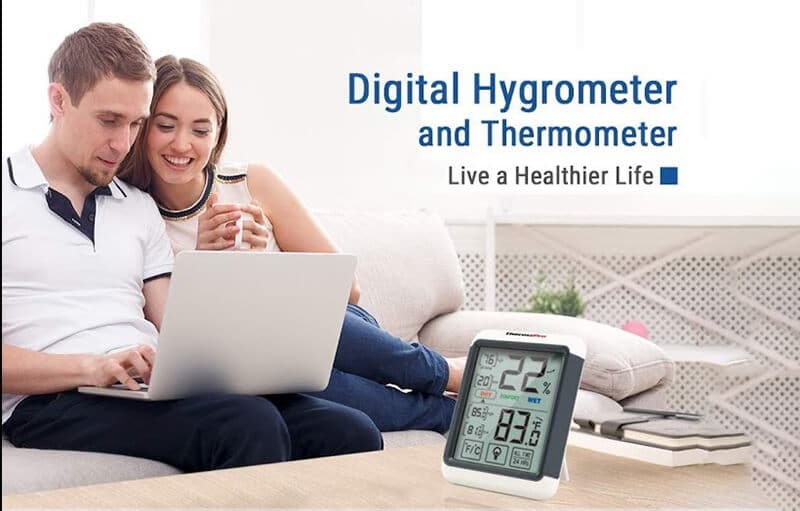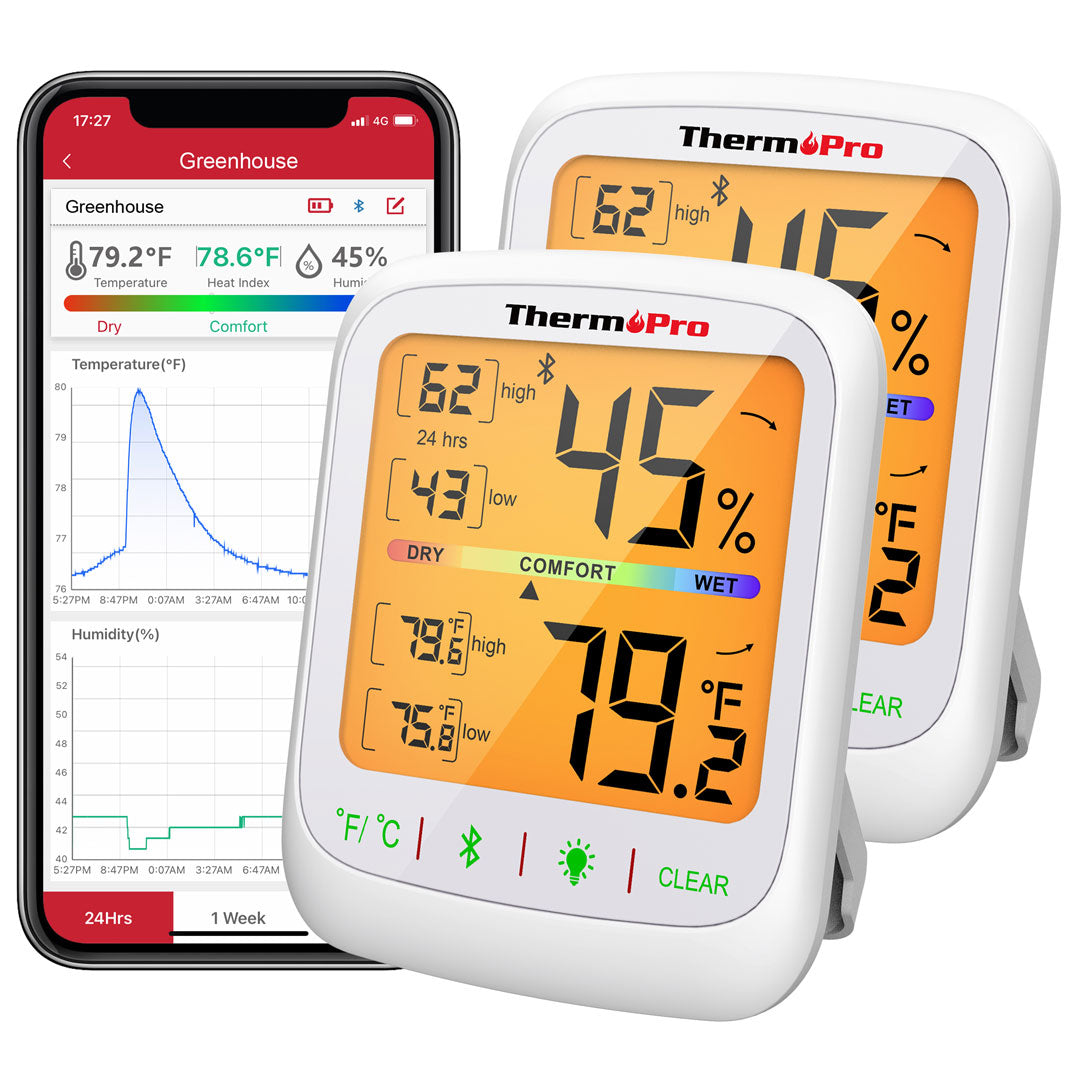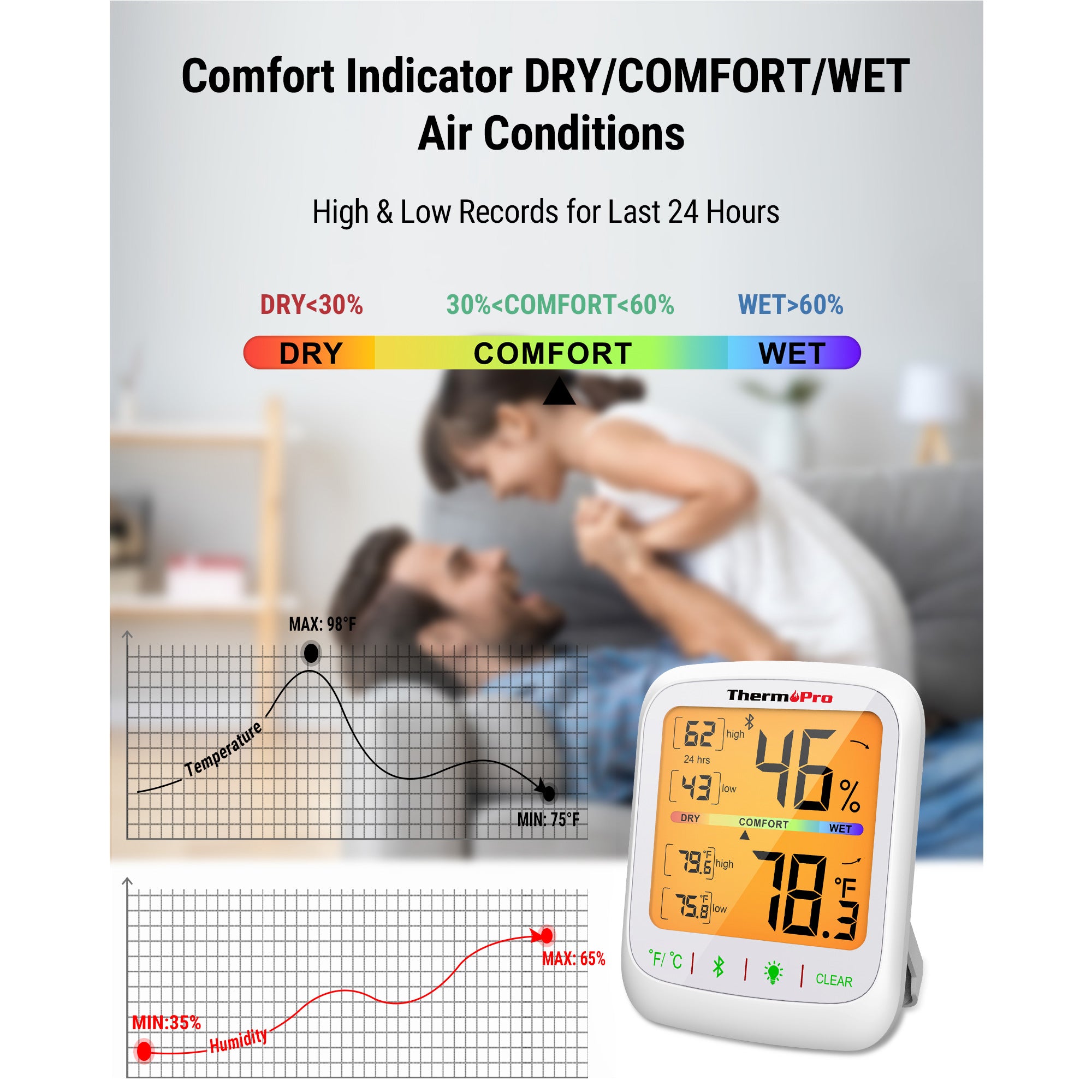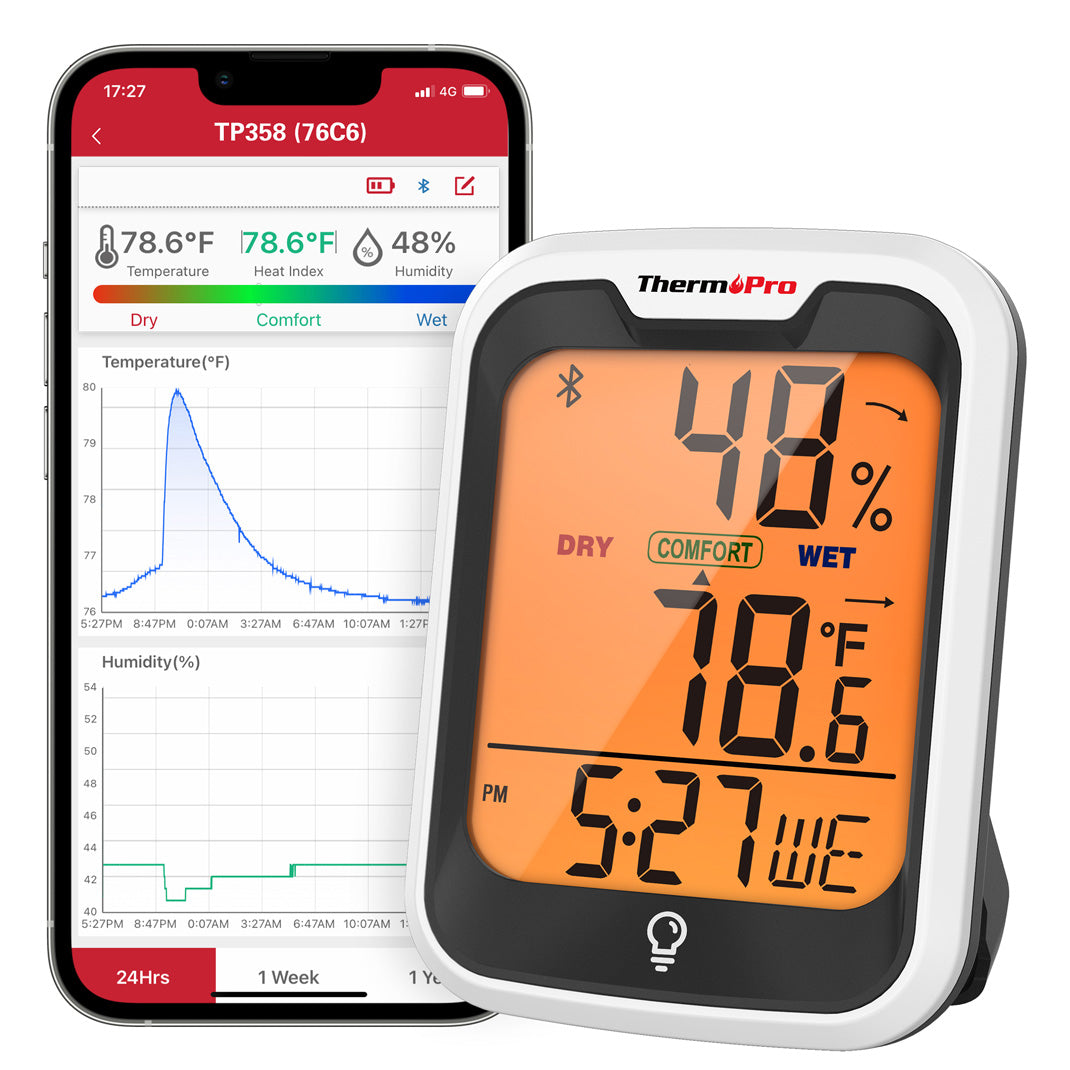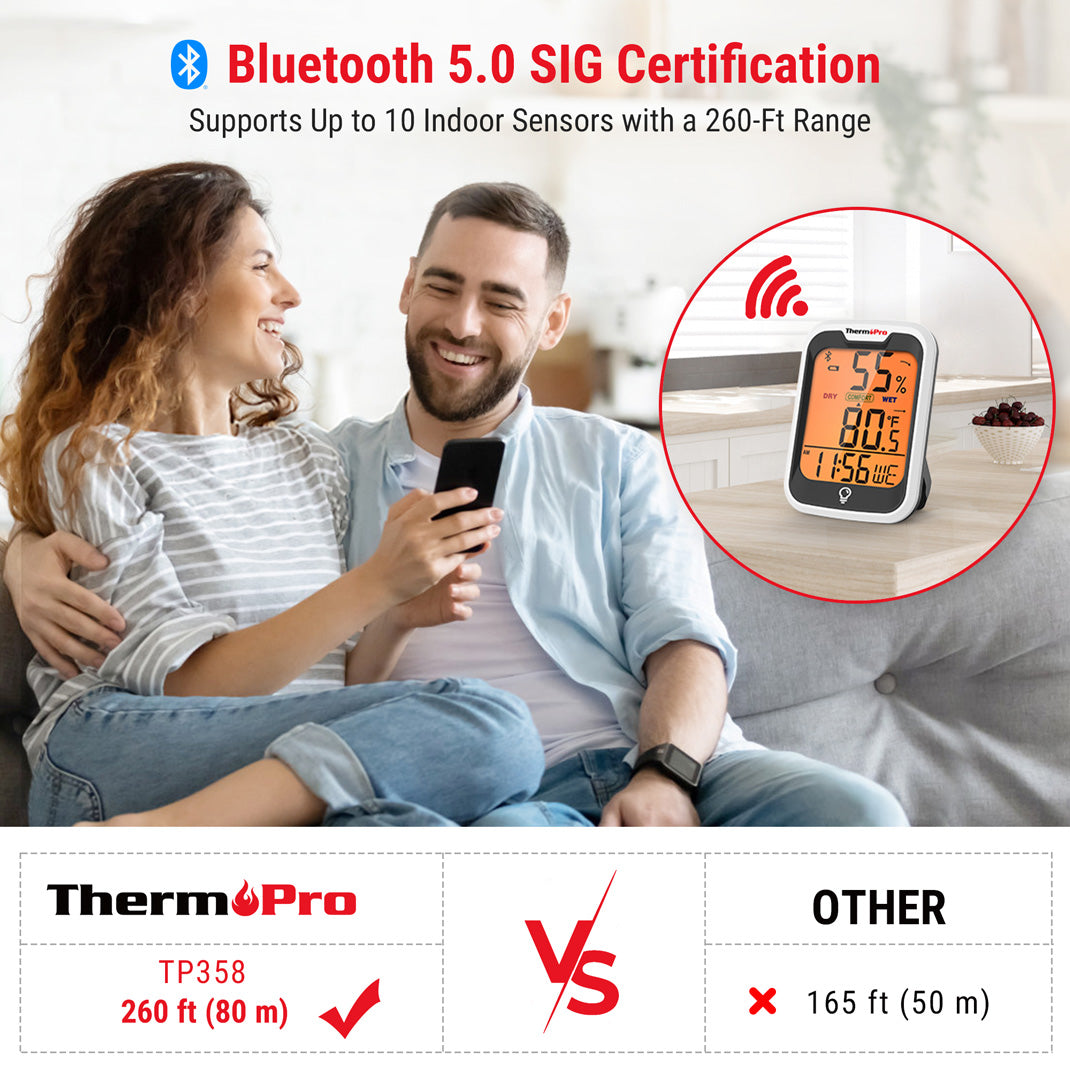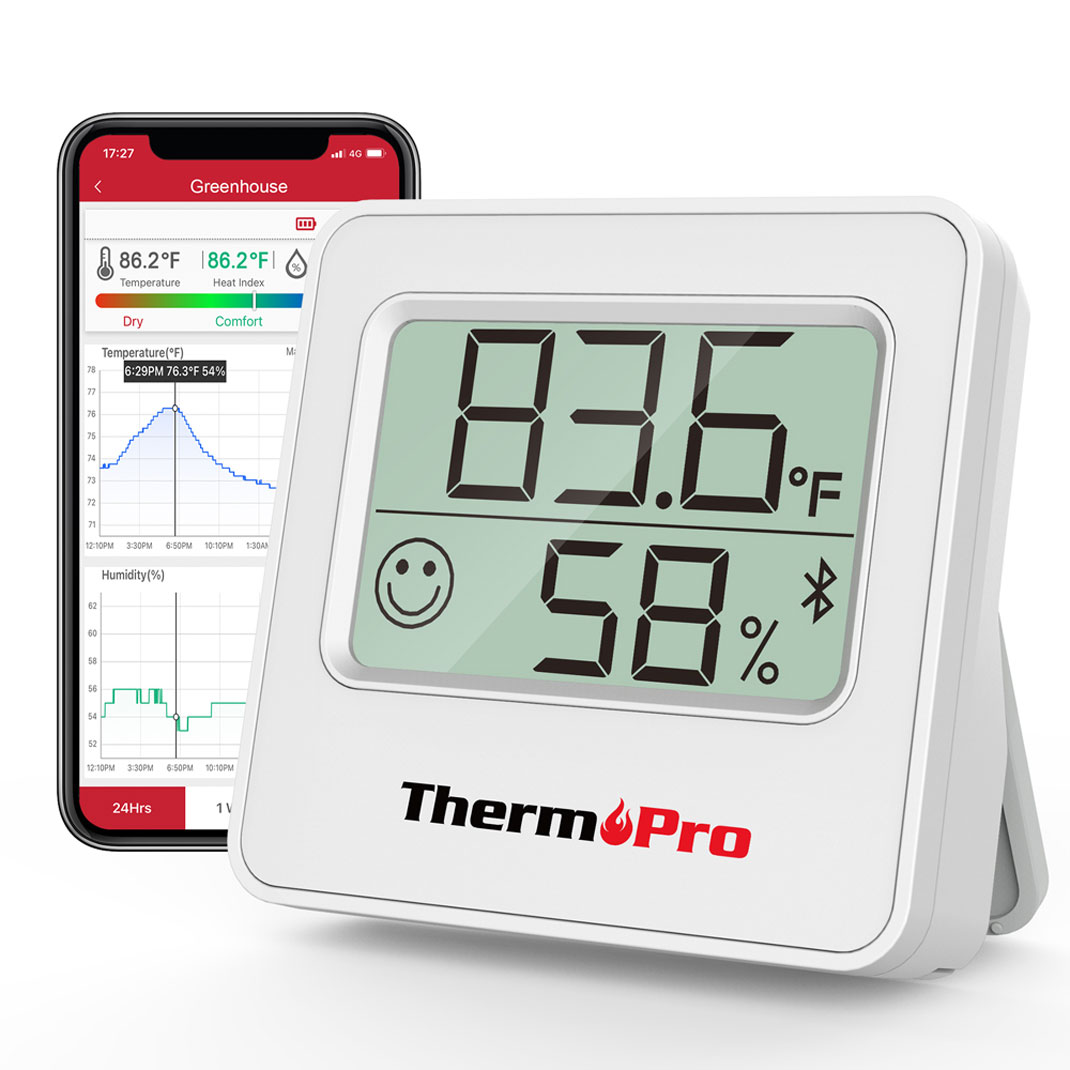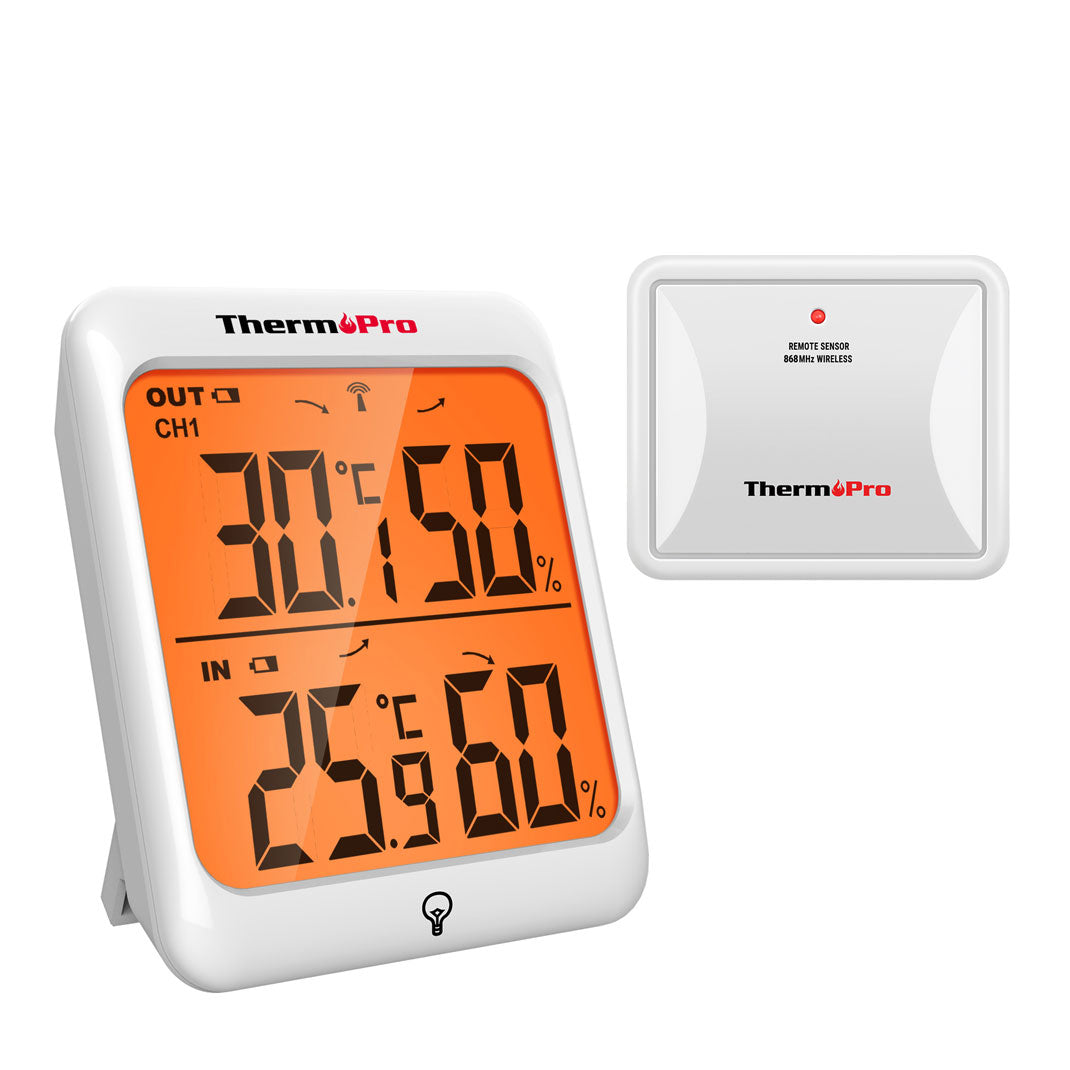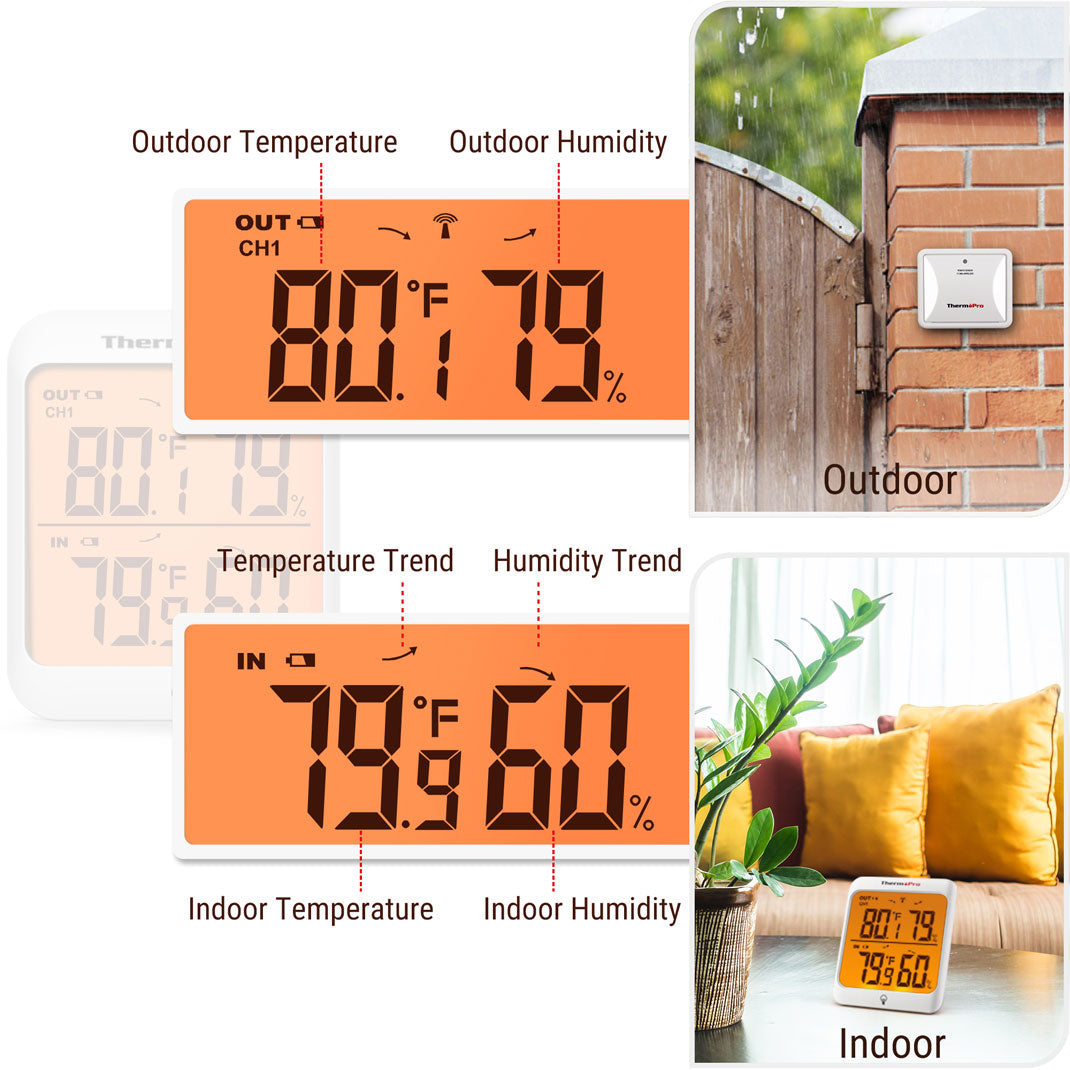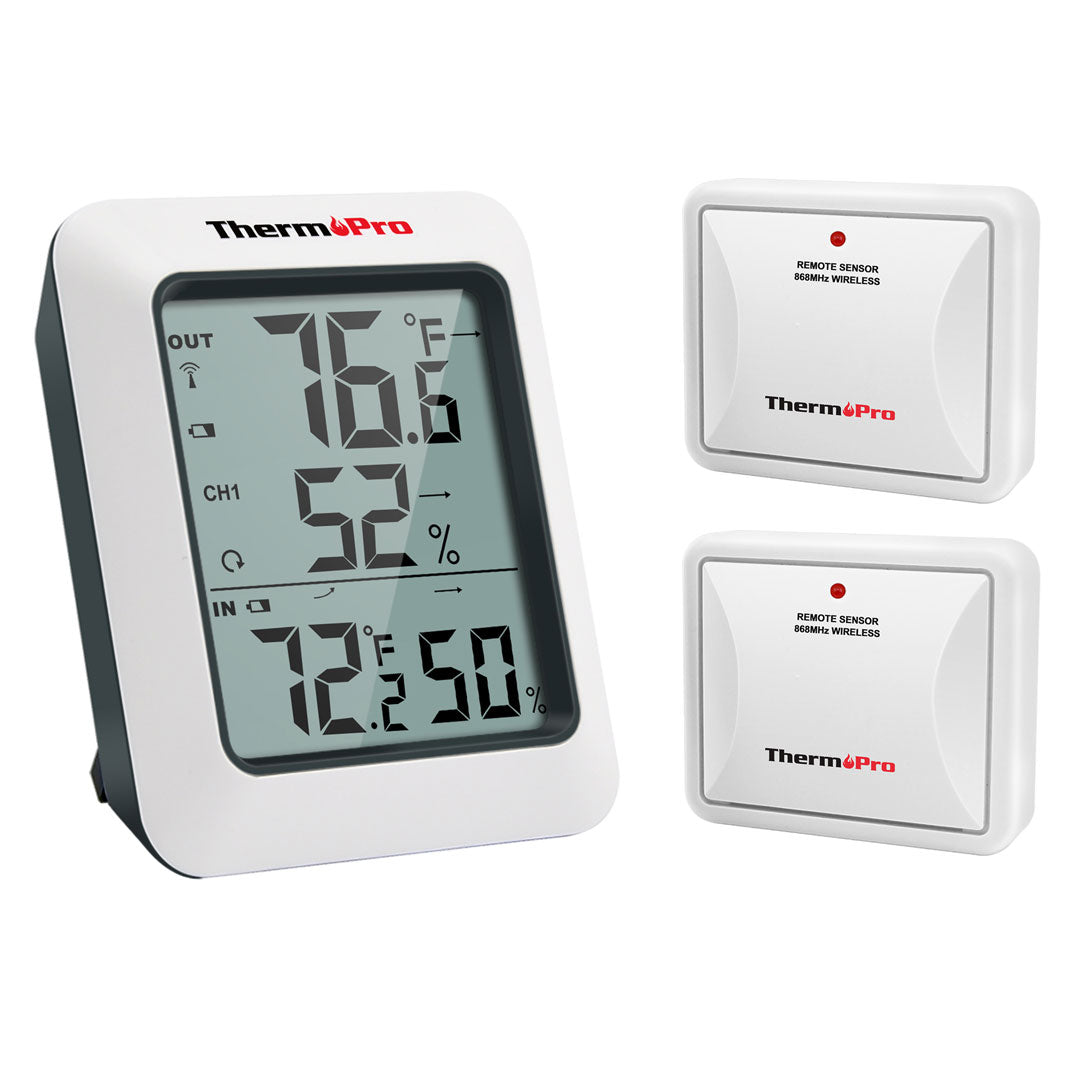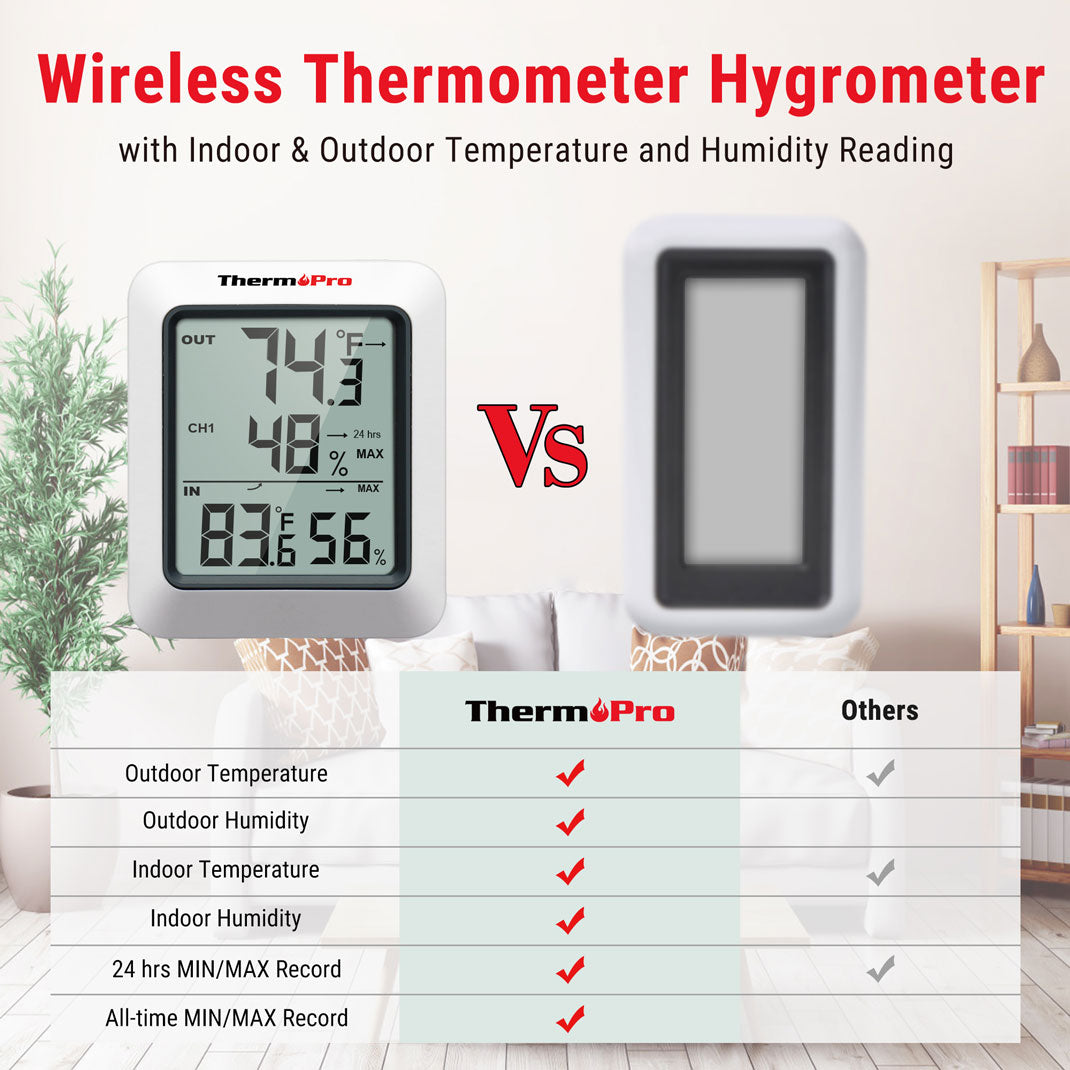What Does a Hygrometer Measure?






 288 Comments
288 Comments
If you've ever felt uncomfortably sticky on a summer day in Florida or experienced static shocks and cracked skin during a bitter winter in Colorado, you've personally felt the effects of humidity. But what exactly is this invisible force, and how can we measure it to improve our comfort, health, and even protect our homes? The answer lies in a simple yet powerful device: the hygrometer.
This comprehensive guide will answer all your questions, from "what does a hygrometer measure?" to how you can use this knowledge to create a perfect indoor environment.
What Is a Hygrometer and What Does It Measure?
A hygrometer is a scientific instrument designed to measure the amount of water vapor in the air. In simpler terms, what a hygrometer measures is humidity. Humidity is a constant, albeit invisible, part of our atmosphere. It's the reason your hair frizzes, your skin feels damp, and your wooden furniture expands and contracts.
When you hear people ask, "what does a hygrometer measure in units?" or "what units does a hygrometer measure in?", the answer is relative humidity (RH), expressed as a percentage (%).
For example:
- 0% RH means the air is completely dry.
- 100% RH means the air is fully saturated with moisture.
So, what does the hygrometer measure specifically? It quantifies the level of moisture in the air, providing you with data that explains why the air feels a certain way. Understanding what a hygrometer measures is the first step toward taking control of your indoor air quality.

Why You Need a Hygrometer
Indoor humidity is more than just a number, it directly affects your comfort, health, and the condition of your home. Most experts recommend keeping indoor humidity between 30% and 50% for optimal comfort and protection.
Health and Comfort
- Combating Allergens and Mold: High humidity (above 60% RH) creates a breeding ground for dust mites, mold, and mildew. These allergens can trigger asthma attacks, allergic reactions, and respiratory issues. A hygrometer helps you identify when to run a dehumidifier to keep levels in check.
- Preventing Illness: Interestingly, very low humidity (below 30% RH) is also problematic. Dry air parches the mucous membranes in your nose and throat, your body's first line of defense against viruses like the cold and flu. Maintaining an ideal humidity level (30-50% RH) helps keep these defenses strong.
- Improving Sleep and Comfort: Sticky, humid air prevents sweat from evaporating, making it hard to sleep comfortably. Dry air can cause a scratchy throat. A hygrometer helps you fine-tune your bedroom environment for restful sleep.
Protecting Your Home
Excess humidity can damage your home's interior and belongings:
- Warped wooden floors and furniture
- Moldy walls and ceilings
- Condensation on windows leading to water damage
On the other hand, air that's too dry can cause:
- Cracks in wooden furniture and instruments
- Static electricity buildup
- Dry air that worsens allergies
Energy Efficiency
When the humidity level is correct, your home feels more comfortable at a wider range of temperatures. This means you can potentially set your thermostat a few degrees higher in the summer to save on AC or lower in the winter to save on heating without sacrificing comfort.
Three Types of Hygrometers
There are several types of hygrometers available, depending on your needs and preferences:
Analog Hygrometers
These are traditional dial-style instruments. While they add a classic touch to your décor, they often require manual calibration and can be less accurate than digital models.
Digital Hygrometers
Digital hygrometers use electronic sensors to measure humidity and display results on a screen. They're accurate, easy to read, and often measure both temperature and humidity.
Learn more about Digital Hygrometer
Smart or Bluetooth Hygrometers
Modern homeowners often choose smart hygrometers that connect to smartphones via Bluetooth or Wi-Fi. They allow real-time remote monitoring and data tracking, perfect for people who have large homes with multiple rooms.
Learn more about Bluetooth Hygrometer
How to Choose the Right Hygrometer
When shopping for a hygrometer, consider these key features:
- Accuracy: Look for models with an accuracy rating of ±2-3% RH and ±1°F for temperature. Precision ensures you're maintaining the best indoor conditions.
- Display and Readability: A clear, large display with backlighting makes it easy to read humidity levels at a glance, especially in dim light.
- Connectivity: Bluetooth or Wi-Fi connectivity allows you to monitor humidity remotely through an app, ideal for busy homeowners.
- Multiple Sensors: If you want to monitor several areas (like the living room, basement, or baby's room), choose a hygrometer that supports multiple sensors, like ThermoPro TP60B with 3 Sensors Wireless Thermometer Hygrometer.
- Design and Battery Life: Compact, energy-efficient models are convenient and require minimal maintenance.
Remotely Measure Humidity: ThermoPro TP359 Bluetooth Indoor Thermometer Hygrometer
One of the best options on the market today is the ThermoPro TP359 Bluetooth Indoor Thermometer Hygrometer, a smart, accurate, and affordable choice for modern homes.
Key Features:
- High Accuracy: Measures temperature with ±0.5°F and humidity with ±2% RH accuracy.
- Long Bluetooth Range: Up to 260 feet of stable connection.
- Real-Time Monitoring: Measure humidity and temperature directly from your smartphone using the ThermoPro Sensor App.
- Data Tracking: View 1-year data trends so you can see how humidity fluctuates throughout the day and night, helping you pinpoint problem areas.
- Smart Alerts: Receive notifications when your home's temperature or humidity goes outside your preferred range.

By using the ThermoPro TP359, you move from passively observing what a hygrometer measures to actively managing your home's environment, ensuring it is always healthy, comfortable, and safe for your family and your possessions.
How to Use a Hygrometer Effectively
Using a hygrometer is easy, but proper placement and habits ensure accurate readings.
Choose the Right Location
Place your ThermoPro TP359 hygrometer on a table or attach it on the wall, away from direct sunlight, air vents, or humidifiers. This prevents false readings caused by airflow or localized moisture.
Monitor Regularly
Check the humidity and temperature readings at different times of the day, especially when weather changes. Over time, you'll understand your home's humidity patterns.
Use in Multiple Rooms
Humidity varies between rooms. Bedrooms, basements, and bathrooms often differ greatly, so multiple sensors or portable hygrometers can give a complete picture.
Adjust Accordingly
If your hygrometer shows humidity below 30%, use a humidifier. If it's above 50–55%, consider a dehumidifier or better ventilation.

Where Can You Use a Hygrometer?
Knowing what a hygrometer measures is the first step; knowing where to place it is the next. This small device can provide invaluable insights in nearly every room of your house, helping you tackle room-specific challenges.
The Bedroom: For Restful Sleep and Personal Wellness
Your bedroom is where your body recovers, making air quality crucial. The humidity level directly impacts sleep quality. Dry air can cause a scratchy throat and nasal congestion, while humid air can make you feel sticky and stifled, disrupting your sleep cycle.
The Benefits: By monitoring the humidity, you can use a humidifier to add moisture if the air is too dry (common in winter with heating on) or a dehumidifier if it's too damp. Maintaining an ideal humidity level between 30-50% RH can help you breathe easier, prevent morning sore throats, and wake up feeling more refreshed. This is a prime example of what a digital hygrometer do for your personal well-being.
Read More: Ideal Temperature and Humidity Conditions for Sleep
The Basement and Attic: Your Home's First Line of Defense
These often-neglected spaces are the most vulnerable to moisture problems. Basements are notoriously damp due to their concrete foundations and proximity to the soil, making them a breeding ground for mold and mildew. Attics can trap hot, moist air that rises from the lower floors, leading to wood rot and compromised insulation.
The Benefits: A hygrometer here acts as an early warning system. A creeping humidity reading signals the need for better ventilation or a dehumidifier before you see visible mold or smell a musty odor. Protecting these areas means protecting your home's structural integrity and preventing costly repairs.
Read More: The Ideal Humidity in Your Basement
The Nursery: Protecting Your Little One's Health
Babies and young children have sensitive respiratory systems and are more susceptible to air quality issues. Maintaining an ideal humidity level in the nursery can soothe a baby's dry, irritated skin and nasal passages, making it easier for them to breathe. It also helps inhibit the growth of dust mites and mold, common triggers for allergies and asthma.
The Benefits: A hygrometer provides peace of mind, ensuring the environment is always comfortable and conducive to your baby's health.
The Living Room and Home Office: Protecting Your Valuables
These rooms often contain your prized possessions: wooden furniture, musical instruments, books, and electronics. Wood is hygroscopic, meaning it absorbs and releases moisture from the air. Fluctuating humidity levels can cause wood to crack, warp, or split. Similarly, dry air increases the risk of static electricity, which can damage sensitive electronics.
The Benefits: By keeping humidity stable, you preserve the beauty and longevity of your wooden furniture, keep your guitar in tune, and protect your expensive electronics and book collection. This demonstrates what a hygrometer measure can do for protecting your investments.
Read More: What are the Ideal Temperature and Humidity for Your Office?
The Kitchen and Bathroom: Tackling Moisture at the Source
These rooms generate significant moisture from cooking, showering, and running water. Short-term humidity spikes are normal here, but if moisture lingers, it can lead to peeling paint, warped cabinets, and mold growth on walls and ceilings.
The Benefits: A hygrometer helps you verify that your ventilation systems are working effectively. After a hot shower or boiling a pot of water, you can watch the reading rise and then fall as the exhaust fan clears the steam. This encourages good habits and prevents long-term moisture damage.
Read More: How to Reduce Humidity in Bathroom
The Greenhouse or Indoor Garden: For a Thriving Greenery
Your plants rely on you to create their perfect climate. Different plants have different humidity requirements. Tropical plants, for instance, often need higher humidity than the average home provides.
The Benefits: A hygrometer takes the guesswork out of plant care. You can accurately measure the conditions and use a humidifier or misting routine to create the perfect environment for your plants to flourish.
Read More: Ideal Temperature and Humidity for a Greenhouse
Garage or Storage Room
If you store tools, electronics, or musical instruments, humidity control is crucial. Too much moisture leads to rust, mold, or instrument warping. A wireless hygrometer lets you check humidity levels remotely and protect your valuable belongings.
You can place the ThermoPro TP359 Bluetooth Indoor Hygrometer Thermometer in any room to track temperature and humidity in real time. If you don't want to check each room individually, consider using a smart hygrometer like the ThermoPro TP63B Wireless Hygrometer Thermometer that supports monitor up to 4 locations simultaneously with additional sensors. This makes it easy to maintain ideal humidity across your entire home.

Conclusion: A Small Tool with a Big Impact
So, what does hygrometer measure? It measures the invisible water vapor in your air, translating it into a meaningful number that empowers you to take action. Understanding what does hygrometer do for your well-being is a critical piece of practical home knowledge.
Investing in a reliable hygrometer, especially a smart model like the ThermoPro TP359 Bluetooth Indoor Thermometer Hygrometer, is a small step that pays massive dividends in health, comfort, and home preservation. Don't just guess about your air, measure it, understand it, and control it. Your lungs, your skin, your wood floors, and your wallet will thank you.













